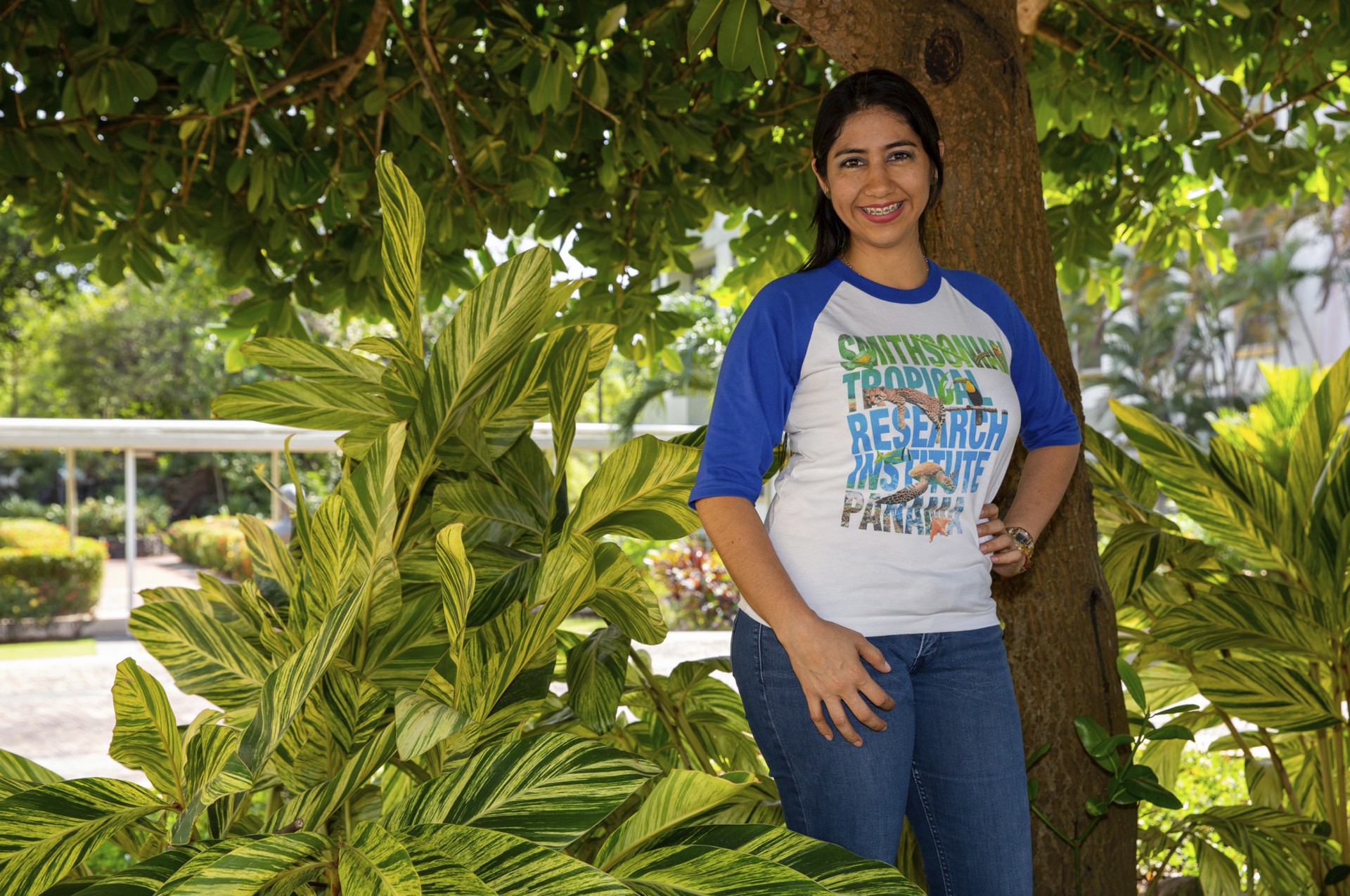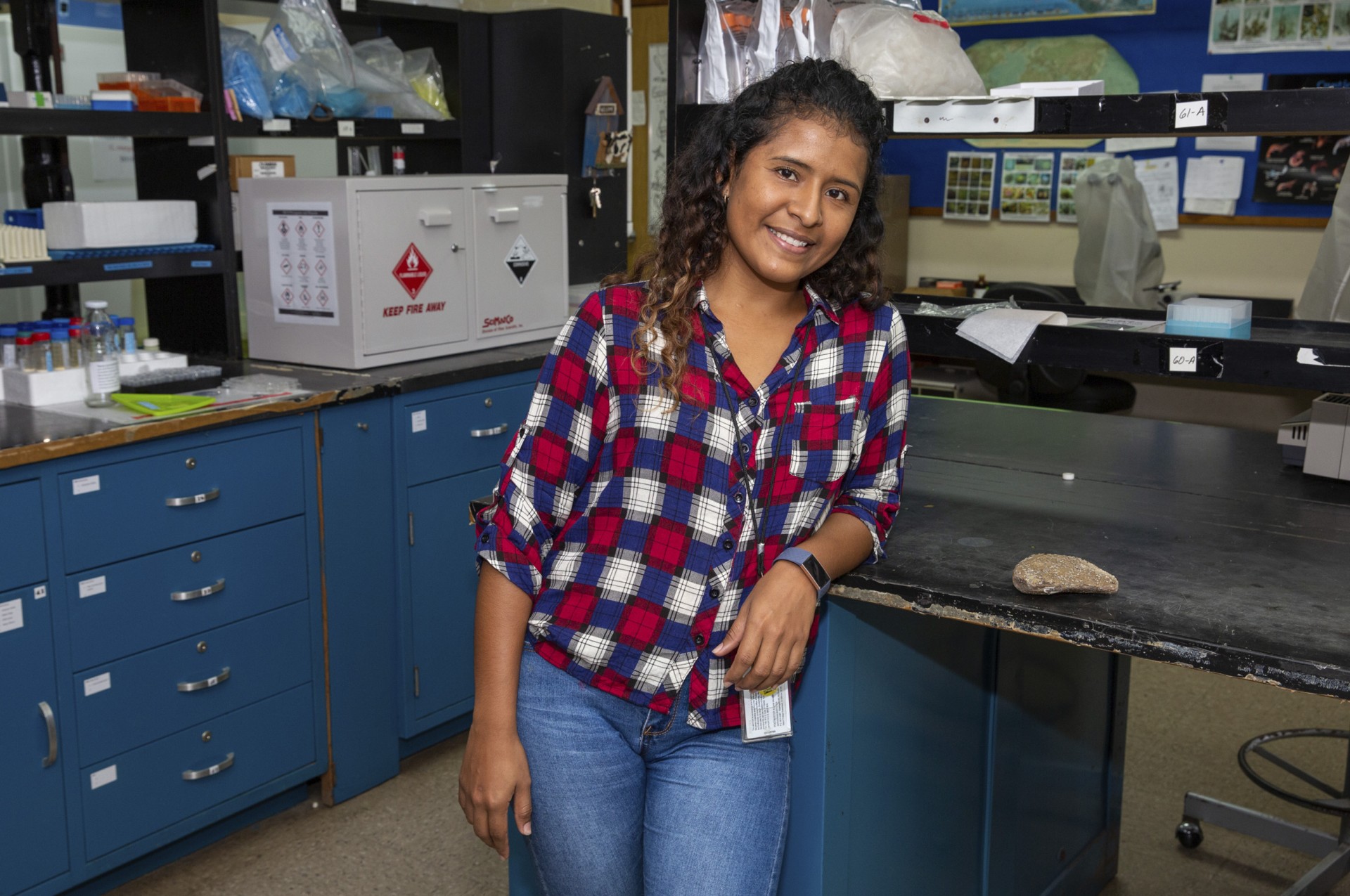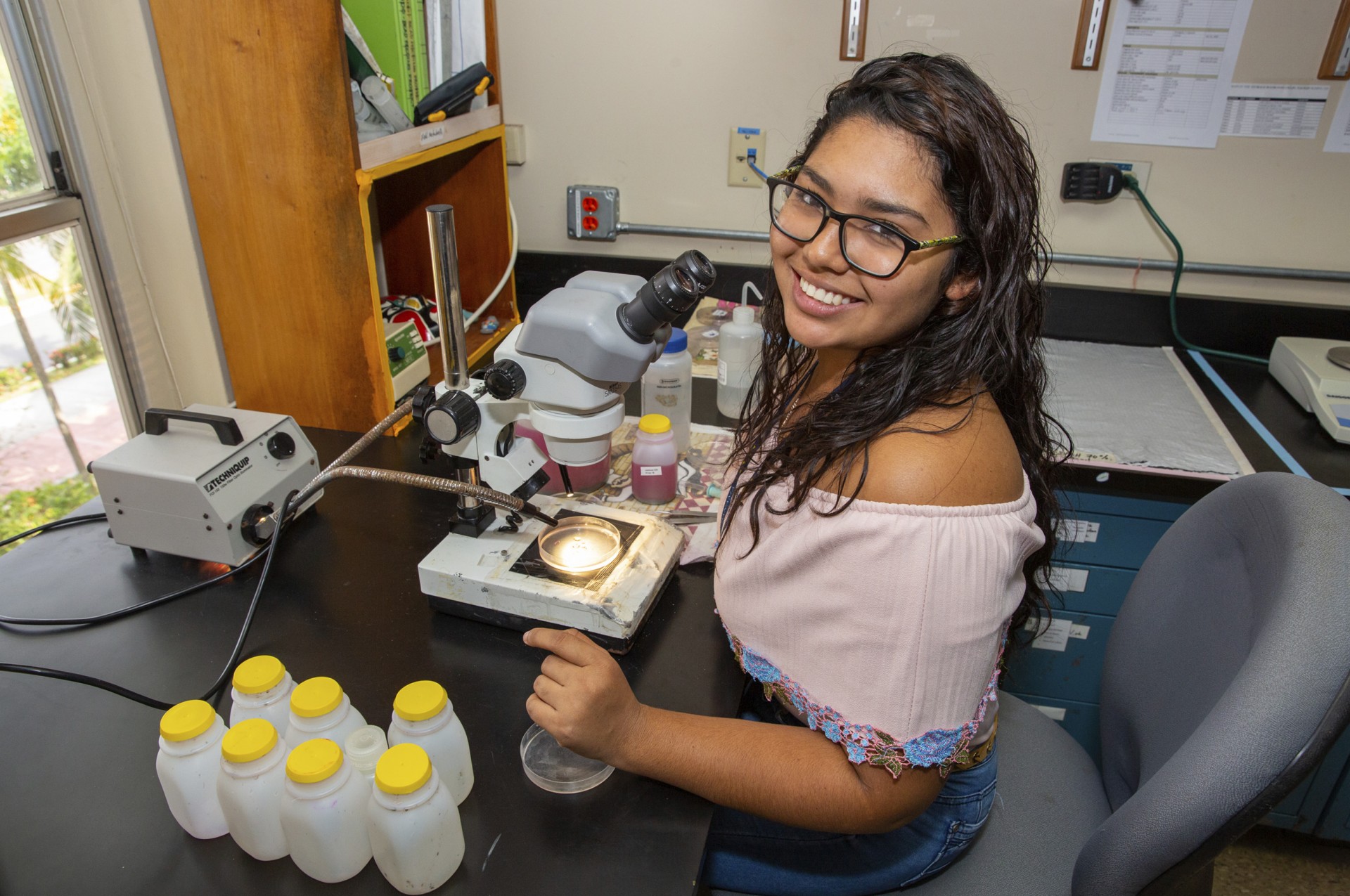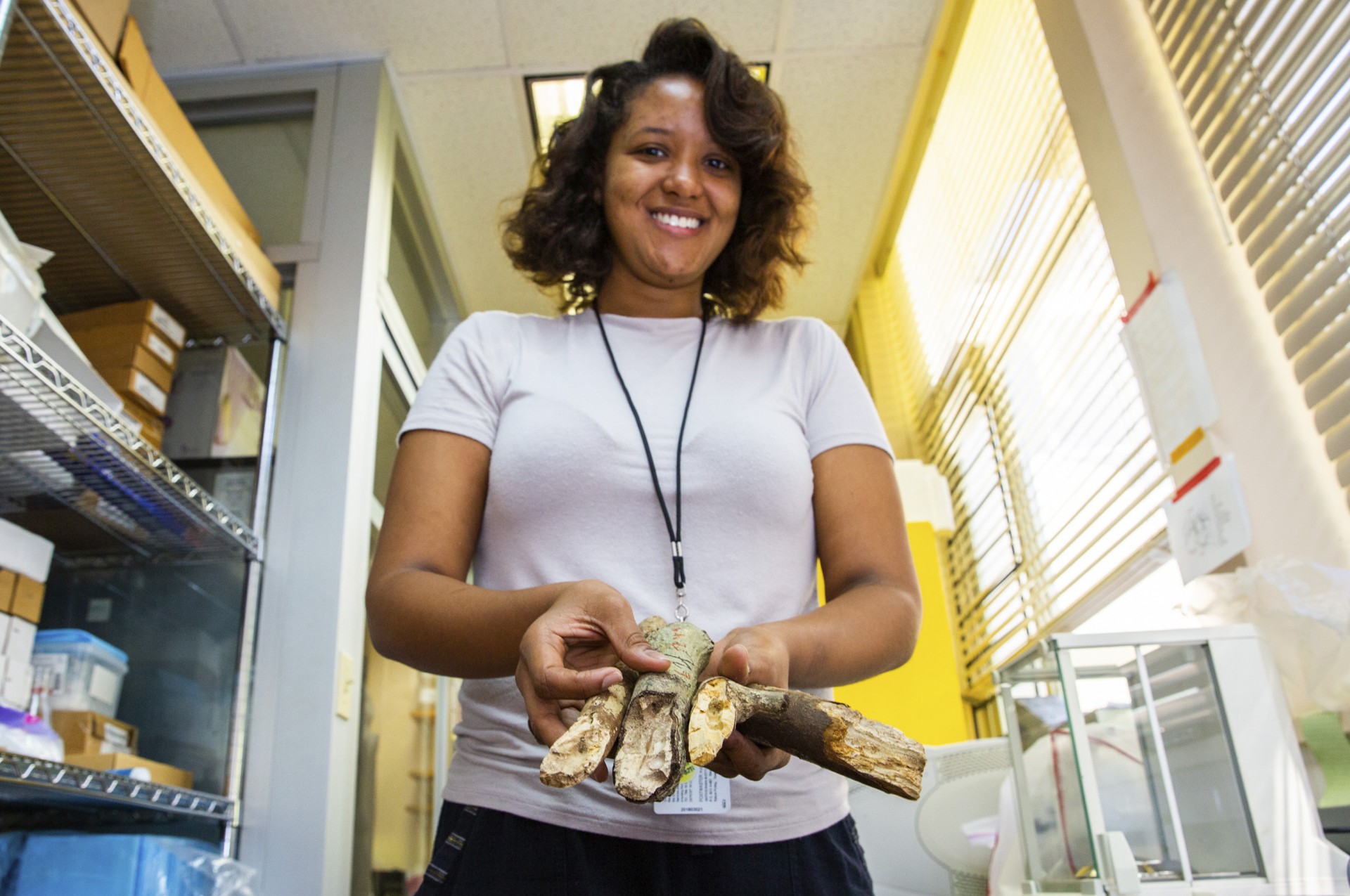Women
in Science
Panamanian students,
scientists in the making
Panama City, Panama
For these four women, the Smithsonian Institute’s internship program represented an opportunity to explore their research questions in the field
Each year, hundreds of interns and fellows flock to the Smithsonian Tropical Research Institute. Some stay for three months, others for up to three years. They are young women and men from all over the world, including Panama, in the early stages of their scientific careers. To celebrate the International Day of Women and Girls in Science, we’re featuring four Panamanian women who will present the progress of their research as part of an internal symposium at the Institute next week.
A phrase attributed to Leonardo Da Vinci inspired María Luisa Rodríguez to study tropical soils: We know more about the movement of celestial bodies than about the soil underfoot. Photo by Jorge Alemán.
María Luisa Rodríguez keeps her research notes in a notebook, on her computer and in her mind. While reviewing them, she runs into one of her favorite phrases: We know more about the movement of celestial bodies than about the soil underfoot. She says it is attributed to Leonardo Da Vinci and that it has inspired her to study tropical soils. The graduate in chemistry from Chiriqui, who is now pursuing a master's degree at the University of Panama, has spent several months as an intern in Dr. Ben Turner's soil laboratory at the Smithsonian. With her research project she seeks to develop an affordable technique to detect potassium in tropical soil samples, since current methods are very expensive. It is an innovative project, because potassium in tropical soils is not studied much, despite being an essential nutrient for plant growth. Maria Luisa would like to eventually return to her native Chiriquí Province, to be a university professor and share her knowledge with the next generations of students.
Maribel Pinto spent a year visiting the beach at Culebra Point weekly to collect samples of barnacles, a type of crustacean that lives attached to rocks, and study their reproductive cycle. Photo by Jorge Alemán.
Maribel Pinto and María Alejandra Sánchez are both marine biology students and interns in Dr. Rachel Collin’s lab at the Naos Marine and Molecular Laboratories. Maribel is in the final stages of her thesis, after spending a year visiting the beach at nearby Culebra Point weekly to collect samples of barnacles, a class of crustaceans. Maribel is investigating the reproductive cycle of these animals that live attached to rocks on the beach, in addition to the relationship of their reproductive cycle to the tidal cycles, information that was previously unknown for the two species that she is studying. After graduating, Maribel would like to develop new marine science projects in Panama and then get a master's degree.
María Alejandra Sánchez studies the effects of ocean pollution, particularly decreased oxygen levels, on the small invertebrates that inhabit the seabed. Photo by Jorge Alemán.
Her colleague, María Alejandra, has focused her thesis project on the effects of ocean pollution on the small invertebrates that inhabit the seabed. More specifically, the impact of the low oxygen concentrations in Almirante Bay in Bocas del Toro, Panama, on these animals. One of the side effects of ocean pollution is decreased oxygen levels, which can cause an environmental imbalance. For example, if small marine invertebrates do not survive these changes, they affect larger animals that feed on them and so on. Fish that can’t adapt, migrate to other places or die. After a course she took at the Smithsonian Research Station in Bocas del Toro, María Alejandra would like to study a master's degree in polychaetes or marine worms.
Janitce Harwood combined her two passions, wood and insects, by studying the stems and branches in which Megalopta bees like to nest on Barro Colorado island. Photo by Jorge Alemán.
A little further afield, on Barro Colorado Island, Janitce Harwood, a biology student with a botanical focus, combines her two loves: wood and insects. The first time she met Dr. Bill Wicslo, it was on the island, when he offered her advice on the field work that she was doing. Later she would learn that she had just met her future STRI adviser. And although she first studied the pheromones in the Megalopta bees on the island, she is now focused on the stems and branches where they nest, particularly their cell structure. This will allow a better understanding of the characteristics of the types of wood the bees prefer. For Janitce, understanding the behavior of bees is fundamental, because without them forest vegetation could not spread and animals would be left without food or shelter. After graduating, Janitce would like to continue her studies up to the doctorate level, after realizing at the Smithsonian that there are new opportunities for researchers.




